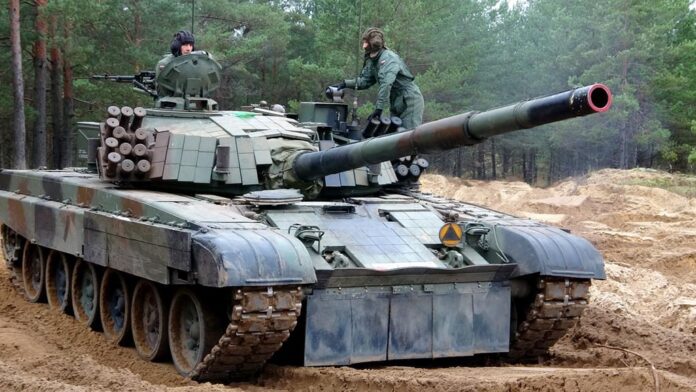Although tanks have shown their limits in the war in Ukraine, they remain the centrepiece of the battlefield, Capt. Antonio Cornacchi of the Italian armed forces told The Canadian Press Thursday.
Cornacchi is in charge of the armoured-gunnery competition involving troops from 13 NATO countries – including Canada – that is taking place over four days at the Adazi base, located about 200 kilometres from the Russian border and a 45-minute drive from Riga, the capital of NATO member Latvia.
The military exercises – dubbed Iron Spear – involve multinational NATO battle group eFP Latvia, which serves both as a dissuasion and a shield in the event of an attack.
Thirty-four crews from 13 NATO armies are testing the striking force and manoeuvrability of tanks, as a debate rages about the relevance of armoured vehicles, following the setbacks incurred by Russian tank units in the invasion of Ukraine.
4:34
Russia accuses Ukraine of intentionally involving NATO with missile strike in Poland during UNSC meeting
Cornacchi said tanks are “highly competitive” during exercises involving firing in motion or from fixed positions.
“The light infantry are also important for our army, but tanks remain the focus,” Cornacchi, commander of an Italian battle company, said in an interview.
Trending Now
Details about slain Idaho students released as victims’ parents push back against police
Canadian military members banned from wearing uniforms, medals in civilian courts
On Thursday, the NATO crews competed for who had the most precise tank-fired shots across a field of a few square kilometres made up of mounds and paths. The shots from tank guns larger than 100 millimetres produced deafening blasts in a viewing bunker where a jury _ composed of Italians and representatives from other NATO countries _ judged the exercises.
The jury is there to “test in a highly professional way the ability of each crew,” Cornacchi said. So far during the competition, he added, the Estonian, Danish and Canadian soldiers “are doing very well.” But he said there is more competition to go.
“This is just the first step, and we’ll see what happens.”
0:29
Canada extends Ukraine military training in U.K.
British and Polish soldiers on Thursday morning manoeuvred on the perimeter and fired shots, some while moving and others from fixed positions. Members of other NATO countries watched their colleagues from the roof of the bunker, braving the damp and bitter cold.
The Canadian unit competed with its German-made Leopard tanks, a model the Canadian Forces used during the war in Afghanistan.
Meanwhile in Ukraine, tank combat is common, but new weapons are threatening the tank’s supremacy on the battlefield, including from drones and an arsenal of anti-tank missiles supplied by Ukraine’s western allies. Among the weapons is the Javelin – which has become a symbol of the Ukraine war – a formidable American-made anti-tank missile. Javelins are small, easy to use and they are wreaking havoc on Russian tank units.
The Ukrainian army has published several videos of turrets from Russian tanks blasting in the air like champagne bottle corks, from the impact of Javelins and other anti-tank missiles: Nlaw, Himars or Carl Gustavs. Canada, for its part, has donated 100 M2 Carl Gustavs to the Ukrainian forces.
Just over 100 years after its invention, the heavy, expensive and cumbersome tank – highly visible and sometimes vulnerable on the battlefield – still plays a critical role in NATO’s defence arsenal.
© 2022 The Canadian Press



